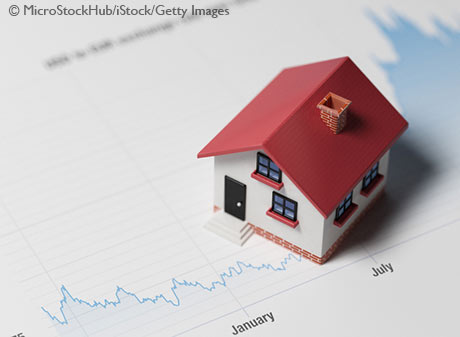Did the Housing Market Fundamentally Change?

Housing markets were especially hot leading up to the Great Recession. According to a recent Economic Synopses essay, some housing markets might be hotter now than they were then.
Vice President and Economist Carlos Garriga, Visiting Scholar Aaron Hedlund and Research Associate Matthew Famiglietti examined housing markets across the U.S. via changes in house prices and in average time on the market (or housing liquidity, as the authors referred to it).
“Since the housing crisis of 2007-11, housing prices and liquidity have largely recovered or exceeded their pre-crisis levels, with some areas running hotter now than during the 2002-06 boom,” they wrote.
The authors compared housing conditions in 2002-06 and 2013-17. Heat maps in the essay show the differences in house prices changes and time on the market changes between the two periods.
House Prices
The authors noted that the 2002-06 housing boom seemed to be concentrated on the East and West coasts. “Housing prices in metropolitan areas of Florida, the Northeast, the Pacific Northwest, and the Southwest increased dramatically,” Garriga, Hedlund and Famiglietti wrote.
At the same time, the Midwest and other central areas saw more modest increases or even decreases. In the current boom, however, the Midwest has seen large increases in prices, and Texas and Northern California have become hot spots.
“The post-crisis period is also characterized by significantly cooler housing markets in the Northeast and parts of the Sunbelt such as Arizona,” the authors noted.
Housing Liquidity
Housing liquidity varied considerably in markets across the country during the 2002-06 boom, the authors found. Some metropolitan areas saw liquidity rise, others saw it fall, and still others saw a mix across counties within the same metro area.
“However, the post-crisis period of 2013-17 saw housing liquidity improve nearly everywhere,” Garriga, Hedlund and Famiglietti wrote, adding that there were some notable exceptions, such as spots in Arizona and California.
Why the Increase in Housing Liquidity?
The authors offered two possible explanations for the rise in housing liquidity.
A Return to Normal
One explanation is that housing markets became more illiquid during the crisis and are simply returning to normal. During the pre-crisis boom, average time on the market remained stable at around 131 days, the authors noted. By 2013, that number had risen to 157 days, but it had fallen to 129 days by 2017.
“This supports the view that the post-crisis period began with a more illiquid market and that the recent boom has restored the pre-crisis liquidity,” they wrote.
Fundamental Changes to the Housing Market
Garriga, Hedlund and Famiglietti also posited that the crisis or other factors—such as institutional investors buying across housing markets—may have fundamentally changed the housing market.
“However, the most current microlevel transaction data have not yet become available, limiting the scope of the analysis to evaluating whether the downward trend in housing liquidity has continued or plateaued,” they noted.
Additional Resources
- Economic Synopses: Are U.S. Housing Markets Hot, Hot, Hot?
- On the Economy: Key Housing Indicators Weaken Further in 2019
- On the Economy: “Debtless” Housing Boom Leads Household Wealth Recovery
Citation
ldquoDid the Housing Market Fundamentally Change?,rdquo St. Louis Fed On the Economy, Nov. 19, 2019.
This blog offers commentary, analysis and data from our economists and experts. Views expressed are not necessarily those of the St. Louis Fed or Federal Reserve System.
Email Us
All other blog-related questions

